Abstract
Suspensions of herpes simplex virus types 1 and 2, cytomegalovirus, and parainfluenzavirus type 2 were inactivated within 24 h when treated at 37 degrees C with 1 mg (5.05 mM) of copper-catalyzed sodium ascorbate per ml. The infectivity titer of respiratory syncytial virus was reduced substantially after 24 h but required 48 h for inactivation. Under these conditions, inactivation of these viruses was also successfully achieved with 5.68 mM catalyzed ascorbic acid. Copper (Cu2+), when added with the ascorbate solution at 5 micrograms/ml (0.022 mM), exhibited a catalytic effect on the inactivation of these viruses. The rate of inactivation was affected by the incubation temperature, time of exposure, and the virus concentration. Ascorbate concentrations as high as 10 mg/ml (50.5 mM) demonstrated only a minimum increase in effect on viral inactivation. The loss of infectivity did not alter either the hemagglutination or complement fixation qualities of the antigens.
Full text
PDF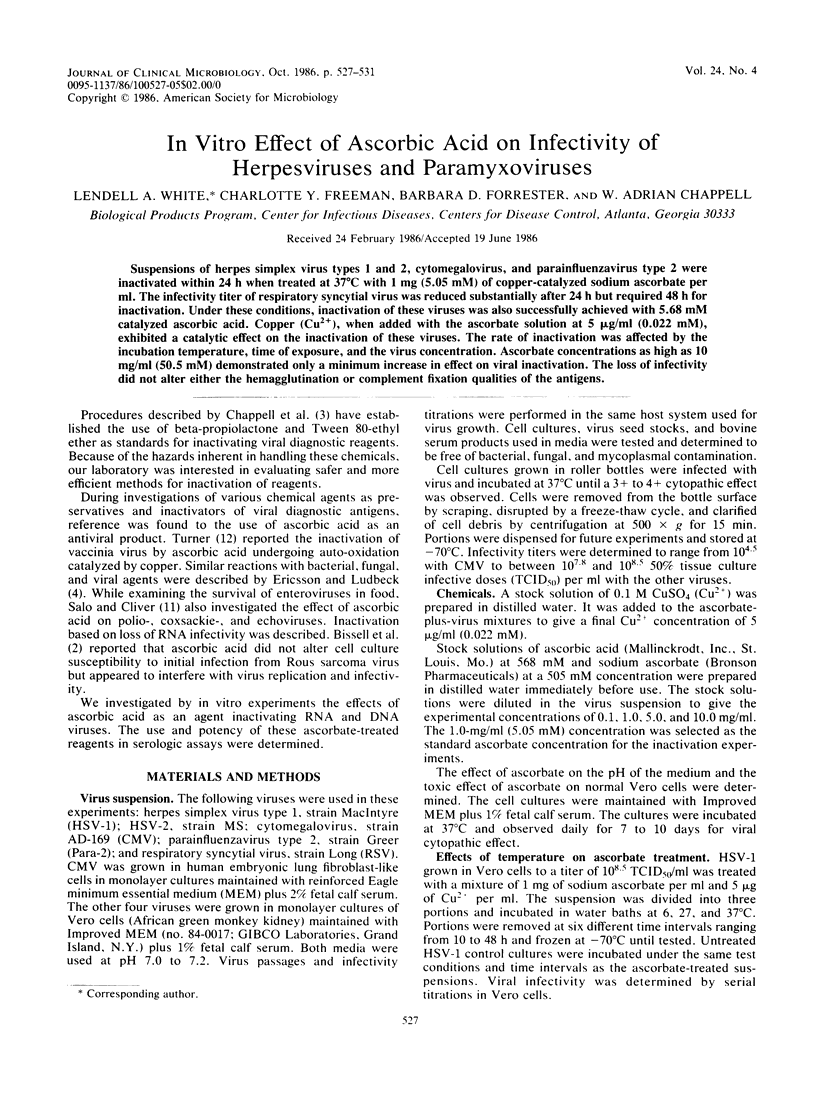
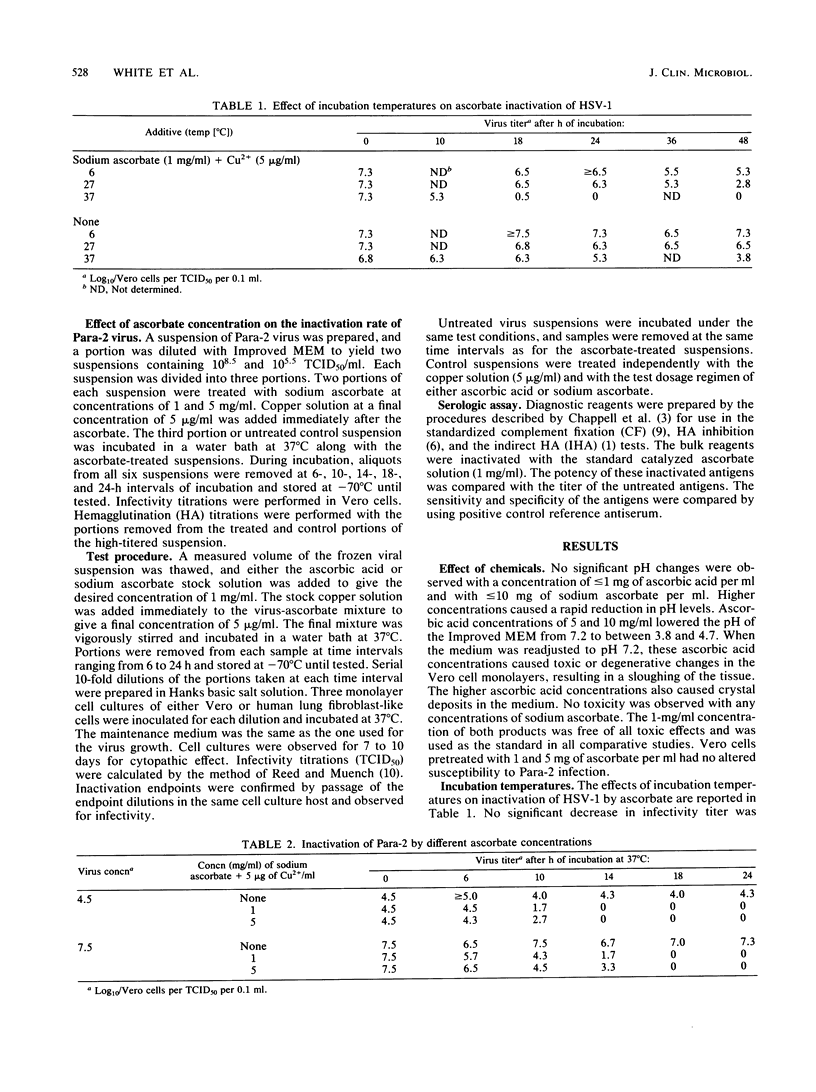
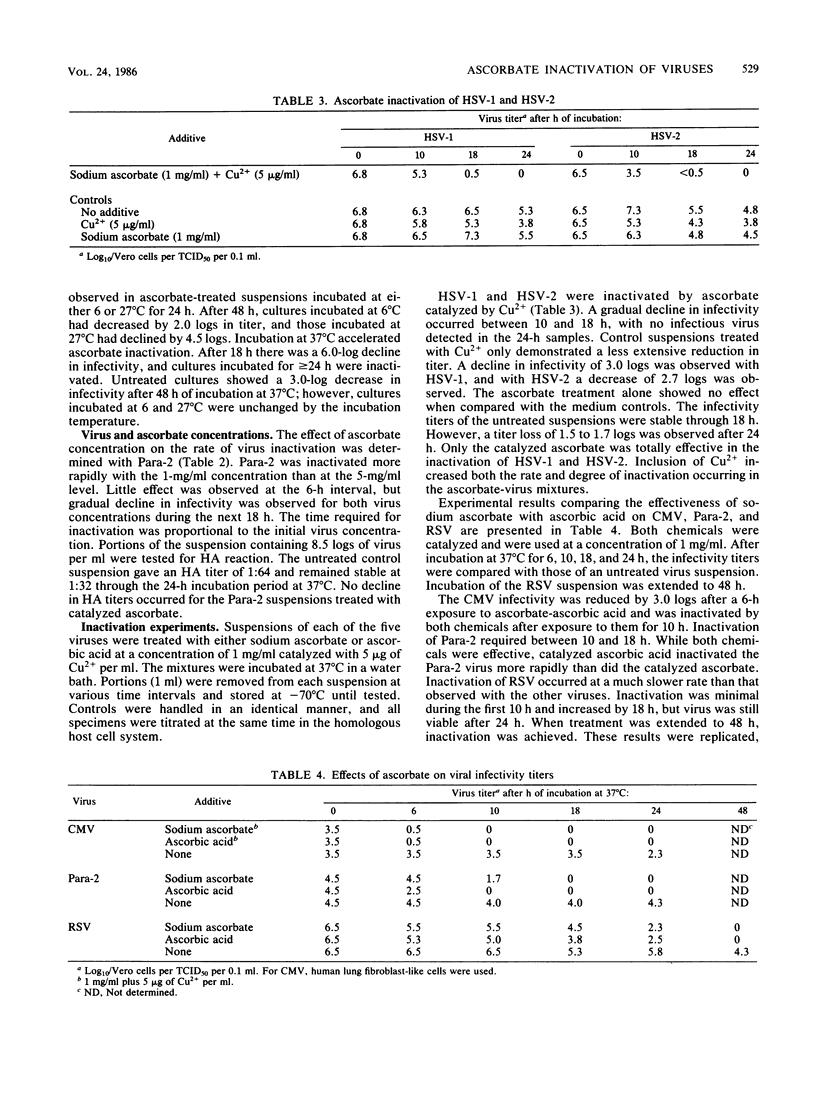
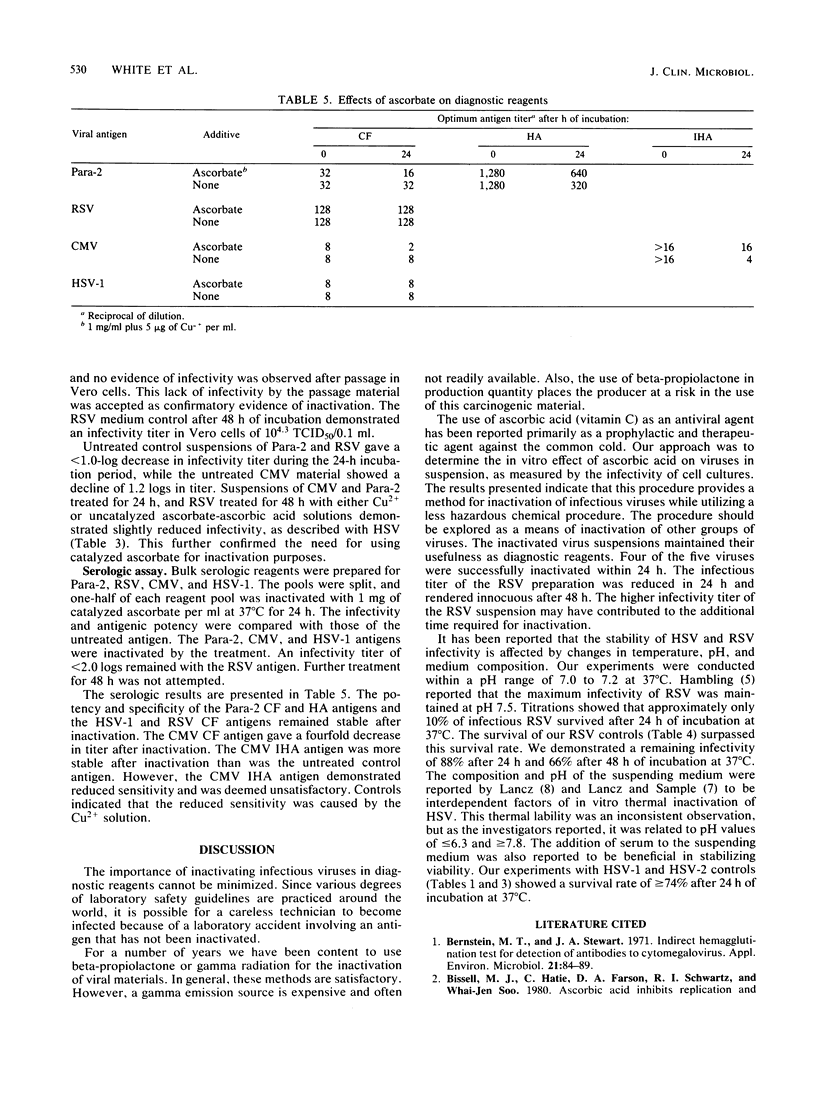
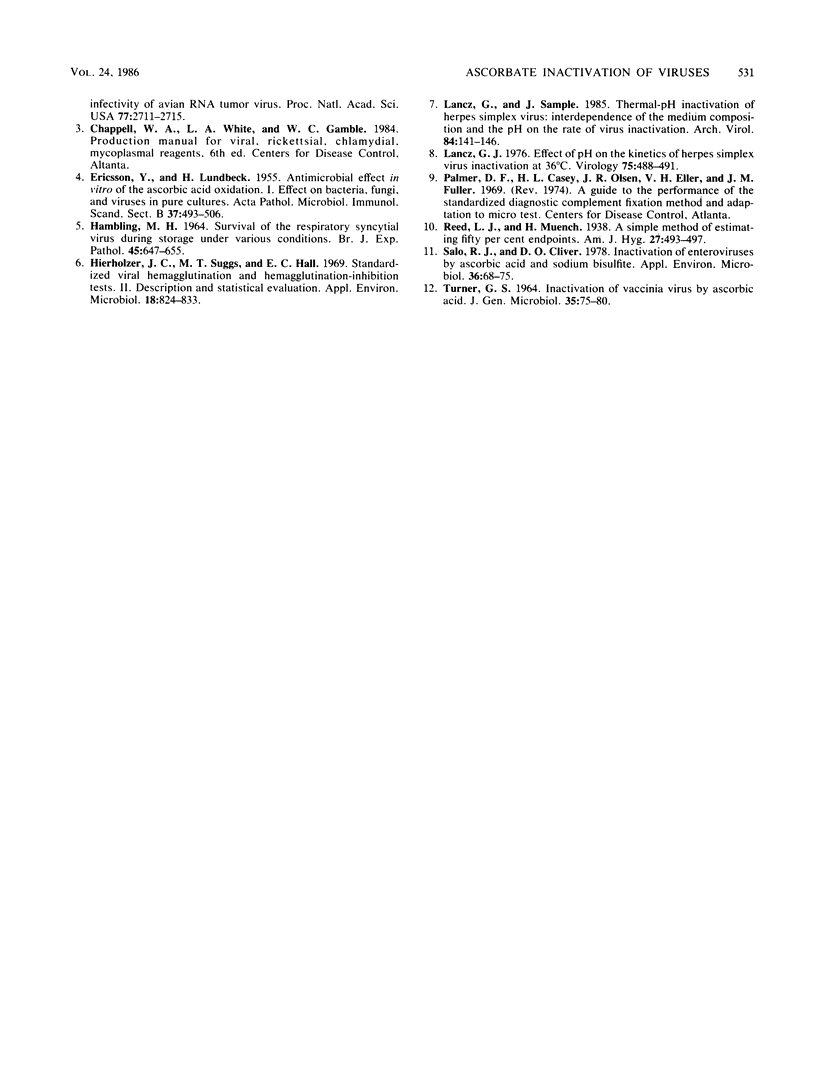
Selected References
These references are in PubMed. This may not be the complete list of references from this article.
- Bernstein M. T., Stewart J. A. Indirect hemagglutination test for detection of antibodies to Cytomegalovirus. Appl Microbiol. 1971 Jan;21(1):84–89. doi: 10.1128/am.21.1.84-89.1971. [DOI] [PMC free article] [PubMed] [Google Scholar]
- ERICSSON Y., LUNDBECK H. Antimicrobial effect in vitro of the ascorbic acid oxidation. I. Effect on bacteria, fungi and viruses in pure cultures. Acta Pathol Microbiol Scand. 1955;37(6):493–506. doi: 10.1111/j.1699-0463.1955.tb00975.x. [DOI] [PubMed] [Google Scholar]
- HAMBLING M. H. SURVIVAL OF THE RESPIRATORY SYNCYTIAL VIRUS DURING STORAGE UNDER VARIOUS CONDITIONS. Br J Exp Pathol. 1964 Dec;45:647–655. [PMC free article] [PubMed] [Google Scholar]
- Hierholzer J. C., Suggs M. T., Hall E. C. Standardized viral hemagglutination and hemagglutination-inhibition tests. II. Description and statistical evaluation. Appl Microbiol. 1969 Nov;18(5):824–833. doi: 10.1128/am.18.5.824-833.1969. [DOI] [PMC free article] [PubMed] [Google Scholar]
- Lancz G. J. Effect of pH on the kinetics of herpes simplex virus inactivation at 36 degrees. Virology. 1976 Dec;75(2):488–491. doi: 10.1016/0042-6822(76)90048-9. [DOI] [PubMed] [Google Scholar]
- Lancz G., Sample J. Thermal-pH inactivation of herpes simplex virus: interdependence of the medium composition and the pH on the rate of virus inactivation. Brief report. Arch Virol. 1985;84(1-2):141–146. doi: 10.1007/BF01310561. [DOI] [PubMed] [Google Scholar]
- Salo R. J., Cliver D. O. Inactivation of enteroviruses by ascorbic acid and sodium bisulfite. Appl Environ Microbiol. 1978 Jul;36(1):68–75. doi: 10.1128/aem.36.1.68-75.1978. [DOI] [PMC free article] [PubMed] [Google Scholar]
- TURNER G. S. INACTIVATION OF VACCINIA VIRUS BY ASCORBIC ACID. J Gen Microbiol. 1964 Apr;35:75–80. doi: 10.1099/00221287-35-1-75. [DOI] [PubMed] [Google Scholar]


